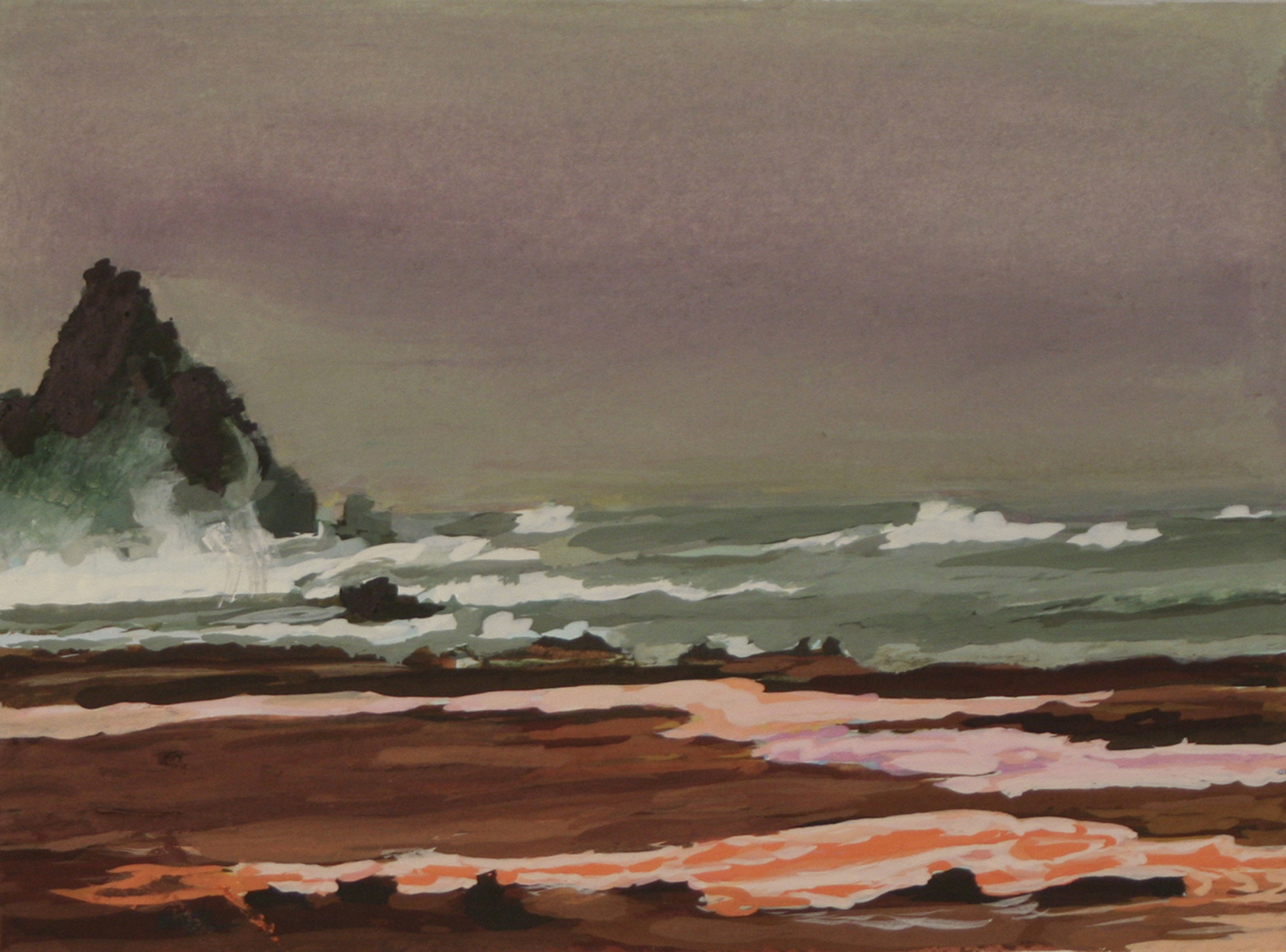Conversations with Gouache

08 March 2022
Substances and capacities of gouache paint in the field and in the studio
Gouache is a close cousin to watercolor, but the two mediums have very different properties.
Transparency | Opacity
The most distinctive difference is that gouache is generally opaque, while watercolor is generally a transparent medium.
Gouache's opaque property allows light colors painted over darker colors, or simply one color of the same value painted over another different color.
Though it's generally referred to as opaque paint, gouache can also wash and flow in transparent layers and glazes.
For an extra thrill, try using watercolor interchangeably with gouache in layers. Let a layer area dry completely, then glaze with a transparent wash of watercolor or a transparent gouache pigment.
Gouache can be mixed with watercolor directly on the palette with to increase both transparency and brilliance. Try contrasting thicker opaque layers with thinner transparent layers. I often do my mixing directly on the paper if I want the richer dimension of a wet-on-wet paint.
Versatility
Gouache can wash, cover or glaze a surface. It can be layered, scraped, sponged, carved, dabbed, daubed, brushed with a fine solid line, dragged, stacked and piled, removed and re-wetted (reactivated). There are endless possibilities to explore.
In this painting ("Moods Of The Sea, 1"), the washy violets and gray-greens of the sky area were initially applied as very loose, somewhat transparent washes, kept wet and manipulated on the paper surface. As the painting developed, I needed more light to glow from the sky, so I sponged out and lifted some of the darker pigment and let the light of the paper come through the paint to add the glow I was after.
Subsequent layers and glazes, with a bit of added white, sit on top of those first washes. This created a sense of varied distance in the air, and a vertical height layering of the sky. Did I plan that? Absolutely not. Read on.
The Conversation
While I'm working on a painting and studying my subject, whether I'm working plein air or in the studio, I'm also observing what's happening in the paint, and seeing where I can push the discoveries that happen as I go. This is the 'conversation' with the medium that's so exciting and valuable in the painting process.

The middle ground - where waves hit the big sea stack & cascade down - shows the paint thickly applied with both a brush and palette knife, heavily scraped out while still somewhat wet, and finally with added paint added on top.
Scraping out the gouache while it's still semi-wet, then dragging a fairly dry brush over the area can produce a 'scumbled' layer rich in texture.

The foreground demonstrates the ability of the paint to create hard contrasted line, as well as brushed, blended washes, and a dry brush dragged and scumbled over contrasting color fields.

Salvador Dali, "Tauromachia.Bullfight", 1967, uses the power of delicate gouache washes handled much like watercolor, overpainted with increasingly opaque, daubed and textured layers.